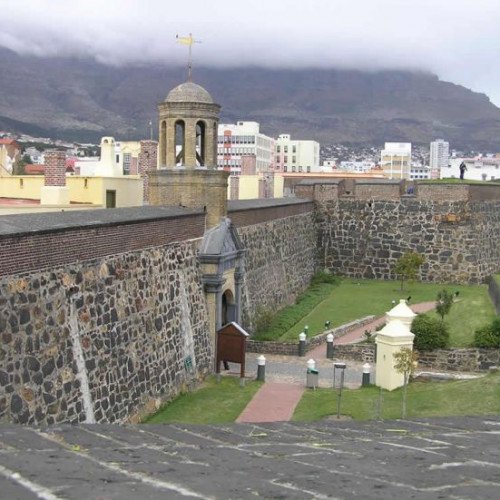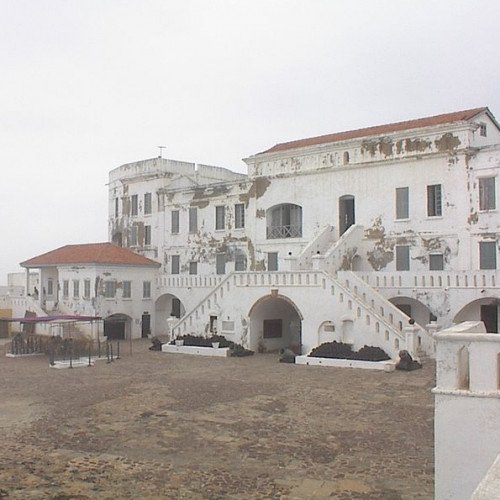Castles of "Ghana" FORT GOEDE HOOP vs CAPE COAST CASTLE

FORT GOEDE HOOP
Fort de Goede Hoop or Fort Good Hope was a fort on the Dutch Gold Coast, established in 1667 near Senya Beraku. The Dutch had already had a lodge in Senya Beraku in the 1660s, but that was abandoned when the British built their fort at nearby Winneba. In 1704, the Dutch asked the Queen of Agona for permission to build a fort at Senya Beraku. It was to serve the gold trade with Akim, which is north of Agona. At first, the Dutch built a small triangular fort, that they called Fort de Goede Hoop (or Good Hope in English). The gold trade was not very prosperous, but later on slaves were sold at the fort. By 1715, the fort had become too small and the Dutch decided to double it in size by breaking away the diagonal and making it square-shaped. A slave prison was made in the southwest bastion of the fort. In the second half of the 18th century, the fort was surrounded by an outer wall. Early in 1782, Captain Thomas Shirley in the 50-gun ship Leander and the sloop-of-war Alligator sailed to the Dutch Gold Coast. Britain was at war with The Netherlands and Shirley captured the small Dutch forts at Moree (Fort Nassau - 20 guns), Kormantin (Courmantyne or - 32 guns), Apam (Fort Lijdzaamheid or Fort Patience - 22 guns), Senya Beraku (Fort Goede Hoop - 18 guns), and Accra (Fort Crêvecoeur or Ussher Fort - 32 guns). The fort was occupied between 1782 and 1785 by Britain, as well as by the local Akim population between 1811 and 1816. In 1868, the fort was ceded to the United Kingdom in a large trade of forts between the Netherlands and Britain. This is the last fort that was built in the Gold Coast.
Statistics for this Xoptio

CAPE COAST CASTLE
Cape Coast Castle (Swedish: Carolusborg) is one of about forty "slave castles", or large commercial forts, built on the Gold Coast of West Africa (now Ghana) by European traders. It was originally a Portuguese "feitoria" or trading post, established in 1555, which they named Cabo Corso. However, in 1653 the Swedish Africa Company constructed a timber fort there. It originally was a centre for the trade in timber and gold. It was later used in the trans-Atlantic slave trade.[1] Other Ghanaian slave castles include Elmina Castle and Fort Christiansborg. They were used to hold slaves before they were loaded onto ships and sold in the Americas, especially the Caribbean. This "gate of no return" was the last stop before crossing the Atlantic Ocean.[2] The large quantity of gold dust found in Ghana was what primarily attracted Europe, and many natives of Cape Coast used this to their advantage. In exchange for gold, mahogany, other locally produced goods, and enslaved captives, local Africans received clothing, blankets, spices, sugar, silk and many other items. The castle at Cape Coast was a market where these transactions took place. At the time enslaved Africans were a valuable commodity in the Americas and elsewhere, and slaves were the main trade in Cape Coast[citation needed]. Due to this, many changes were made to Cape Coast Castle. One of the alterations was the addition of large underground dungeons that could hold as many as a thousand slaves awaiting export. Many European nations flocked to Cape Coast in order to get a foothold in the slave trade. The business was very competitive, which led to conflict and for this reason, the castle at Cape Coast changed hands many times during the course of its commercial history.